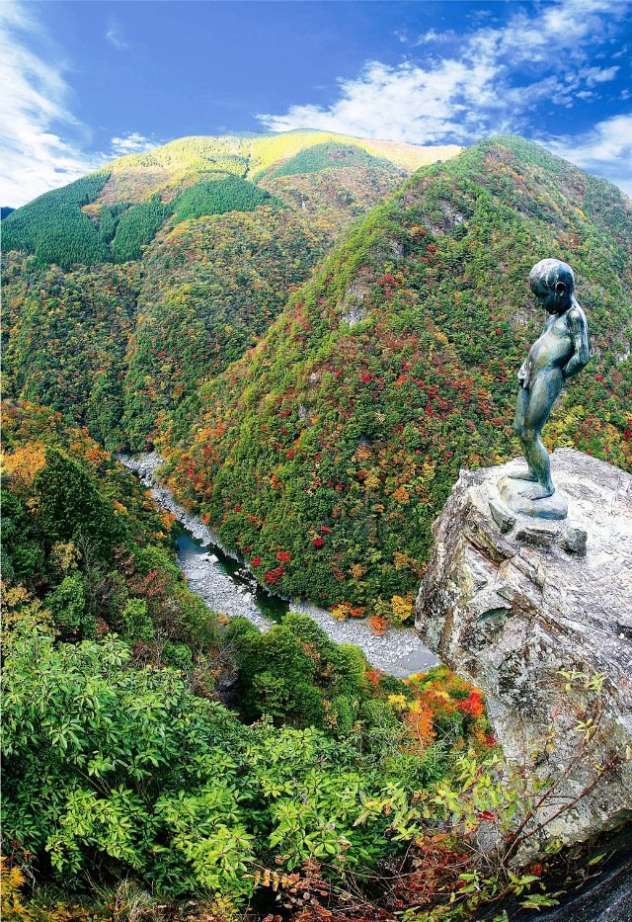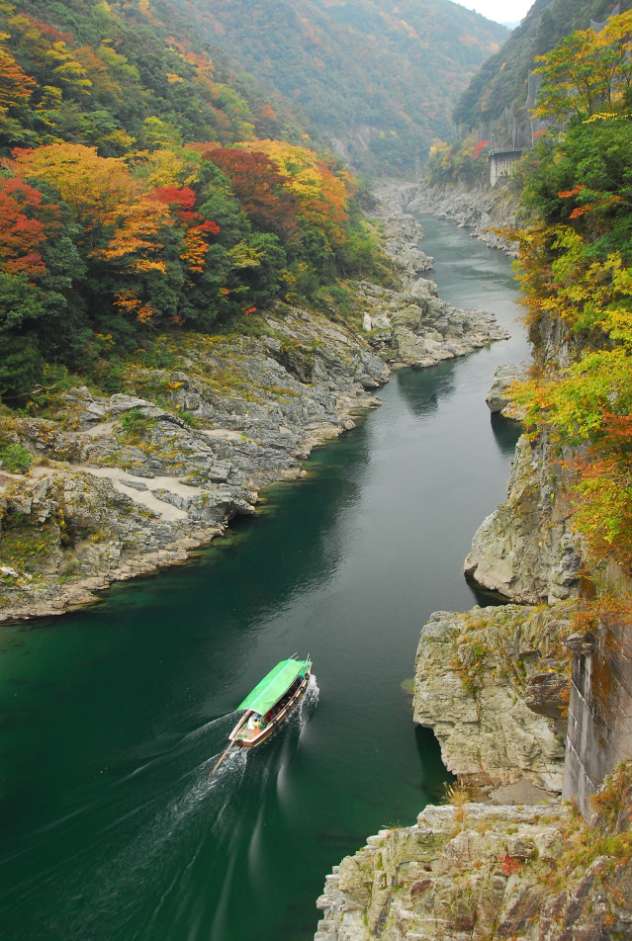Ask someone to name the four islands of Japan and you will find that most people can manage at least two or three – Hokkaido, Honshu and sometimes the odd person will get Kyushu. Mention the smallest and least visited of the four islands, Shikoku, and you’ll be greeted with blank expressions and mild confusion.
Perhaps that’s the reason Shikoku remains so far from the modern world with its cultural traditions so well preserved. Alive with character, history, scenery and precision timing that could rival the Swiss, this island is now gearing up to welcome western travellers.

Shikoku is a land of contrasts, contradictions and colours. Bursting with vibrancy in the Autumn, splashes of yellow from the golden Gingko trees, burnt oranges and fiery reds from the exquisite Japanese Maples, Shikoku is serviced by 4 small scale airports, as well as an extensive rail network linking the island from coast to coast, with an expressway and ferry services connecting it to the mainland. It is surprising at how easily accessible the island is yet it still remains so far off the travellers radar. Far from the screaming sky scrapers of Tokyo and Osaka, this timeless island offers the yester years of Japan. Vending machines still whir and hum on every corner, gadget driven toilets with heated seats are still found in every bathroom, yet that is the extent of the modern, electronic infused Japan the common traveller has come to know. The language barrier is extremely profuse which may pose a problem for the first time traveller with little or no English available in most regions, yet everywhere you go you are greeted on arrival with a deep bow and an ear to ear grin in true warm heart felt Japanese style hospitality and despite that lack of verbal communication, somehow it just works.
Although a barrier for some, the lack of English maintains and captures the authenticity that makes Shikoku so raw and untouched. It can however be a travellers nightmare, not to mention frustrating being unable to communicate, follow directions or know which is the male or female Onsen!! Shikoku is currently for the easy going, open minded and patient traveller. Hotels are yet to employ staff who speak English, there is no signage in hotels available in English, and there is very little information available online in English for travellers about various sights and activities on offer. Many hotels are only just starting to offer non-smoking rooms, the food is almost always Japanese cuisine with no western alternatives, which for some people is great – but not everyone can stomach a whole raw fish complete with head, tail and innards at 7am! This is now all slowly starting to change with a huge push from Shikoku Tourism shouting a loud, clear message that they want western travellers!

Hospitality in Shikoku is some of the best I have seen in the world. The people of Shikoku are some of the loveliest people you will ever meet. Bowing continuously and offering to put slippers on your feet, always greeting you with a smile, ensuring your green tea is topped up and hot. Thanking you for anything and everything from allowing them a moment of your time to introduce themselves, and even asking for permission to allow someone else to speak. Never before have I come across such courteous and genuine people. Nothing is too difficult and all they want to do is please you.
For the traveller who is itching for that “somewhere new”, somewhere few people have been and most importantly, somewhere off the tourist tracks with the most popular hotel on the island currently only receiving 600 foreign visitors a year – then add this to your bucket list! Unique Experiences such as swimming with whale sharks, cooking fresh Bonito with famed Japanese chefs over raw straw, as well as staying overnight in a 300 year old traditional thatched roof house in a remote village referred to as the “Tibet of Japan” and formally the home of author Alex Kerr are just a snippet of what is on offer for the curious traveller.
Perhaps the most remarkable and rewarding experience on offer in Shikoku is the 88 Temple Pilgrimage trail which covers 1400km and circumbulates the entire island. The centuries old pilgrimage is believed to follow the footsteps of the great Japanese Buddhist saint Kobo Dashi. Those who become involved in the pilgrimage wear a white vest (hakui) as they walk which represents purity and innocence. The wooden staff carried in hand jingles with bells and is etched with prayers and chants which is believed to be the embodiment of Kobo Dashi, who guides and supports pilgrims along their journey. As people see that you are a henro (pilgrim), they will treat you as such and you will be welcomed into the culture of giving. Your memories will come from what happens in between each sacred site. The temples only punctuate the pilgrimage, they do not consist of it. Walk through and experience big cities, small towns and villages, stroll beside the rolling ocean and scale lush mountains. Do as much or as little as you can.

Discover Shikoku’s raw beauty, rich cultural heritage and tantalise those tastebuds with the fresh, mouth-watering cuisine, washed down with locally brewed Sake while it is still an experience in itself to witness such a truly authentic region and culture. Be absorbed in the abundant history and tradition of untouched Japan.
Written by Lisa Pagotto – www.crooked-compass.com
About Travellers Blog
Travellers Blog entries are submitted by travellers communicating their travel experiences in Japan and are published ‘as is’. Opinions written do not necessarily reflect those of JNTO. If you wish to submit a blog, please submit an enquiry through the contact us page.



















































